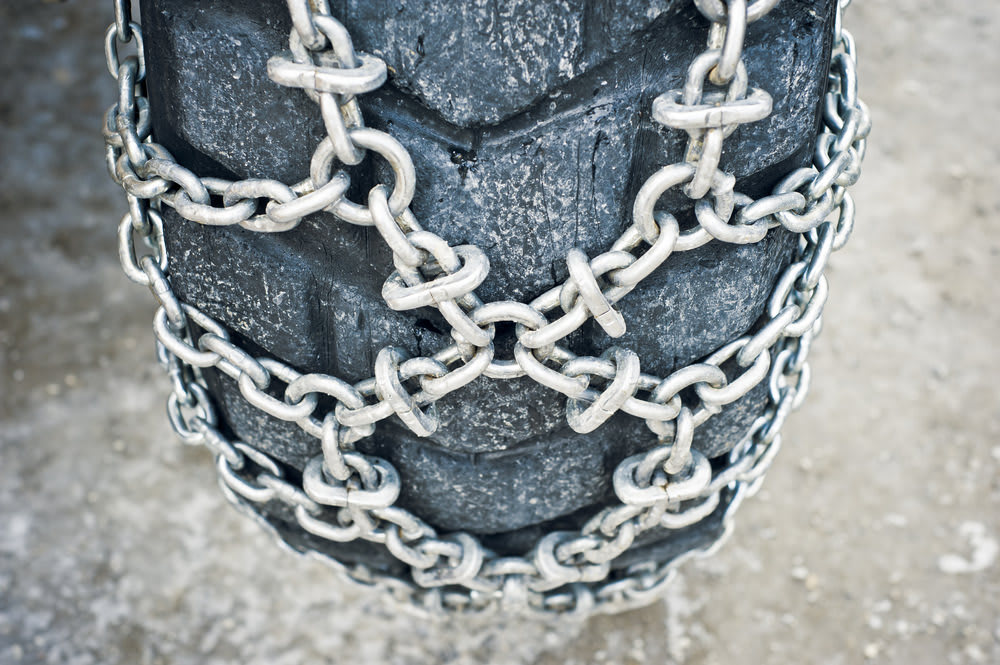

Winter weather has a reputation for being dangerous and unpredictable. There are days where you would prefer to sit inside with a mug of cocoa and read a book, but life demands that you venture out onto snowy roads. Uncertain driving conditions can occur even in the spring - you could be on a trip through the Rocky Mountains and have the weather turn from nice to nasty in moments. For these occasions, tire chains are necessary.
Since tire chains have been re-introduced into the public market as of late, let’s take a look at how to install them on a tire.
How to install chains on your tire
Determine how many tires need chains - Tire chains are designed to be used on all drive tires. On a front wheel drive, use them on both front tires. If your vehicle is rear wheel drive, use them on both rear tires. For all wheel drive and four wheel drive vehicles, all four of your tires need to be equipped with tire chains.
-
Lay the tire chain out on the ground - Untangle and straighten the outer chain, inner chain, and the sections that connect the two sides. Lay them out with the outer part of the chain topside.
Tip: If the tire chains are equipped with v-bars, they will be on top.
-
Pick up the chains and lay them on top of the tire - Center the chains roughly on the tire tread and straighten the links.
Tip: For the best fit, the links need to be as un-twisted as possible. Check the inside chain and compare it with the outer chain.
Adjust the chains - them so they are about equal from the center of the tire. Lay the connecting hooks out in a fashion that you won’t drive over them when you pull ahead to finish attaching the chains.
Pull your vehicle ahead - All you need is roughly a quarter-turn of your wheel. This will put part of the forward end of the tire chain under the tire, and the fastener hooks should be exposed for use.
-
Connect the outer chains together - Start on the inside chain. Hook the chain as snugly as possible. You will be coming back to check its tightness again. Hook the outer chain through the furthest link possible while still being able to clasp it.
Tip: Some tire chains have keepers on them so the hook can’t unclip on its own. Slide this in place if so equipped.
Adjust the chains tighter - Check the inner chain again, and adjust tighter if you are able to. If it still doesn’t feel very tight, don’t worry. When the outer chain is adjusted, it will take up the slack in the inside chain.
-
Check for cam adjusters - If the outer chain has cam adjusters, you will be adjusting them next. A cam adjuster looks like a half-circle link in the chain with a slot that the two ends are attached to.
Tip: If your chains aren’t equipped with cam adjusters and seem too loose, use a bungee cord on the outside chain to pull the sides together from three or more points.
Adjust the cams - Using a cam adjuster tool, turn the cam until it tightens and holds. You will be able to feel when it tightens. Adjust the remaining cams until the outer chain is tight.
Strapping chains onto tires isn’t a process the general public has really considered until recent years. Tire chains have been left to the trucking industry, with highway tractors still employing them exponentially more than passenger vehicles. But with these simple steps, you can add chains to your tires.
For all of your other car troubles, or if you have any questions when installing tire chains, don't hesitate to call a mechanic today.



